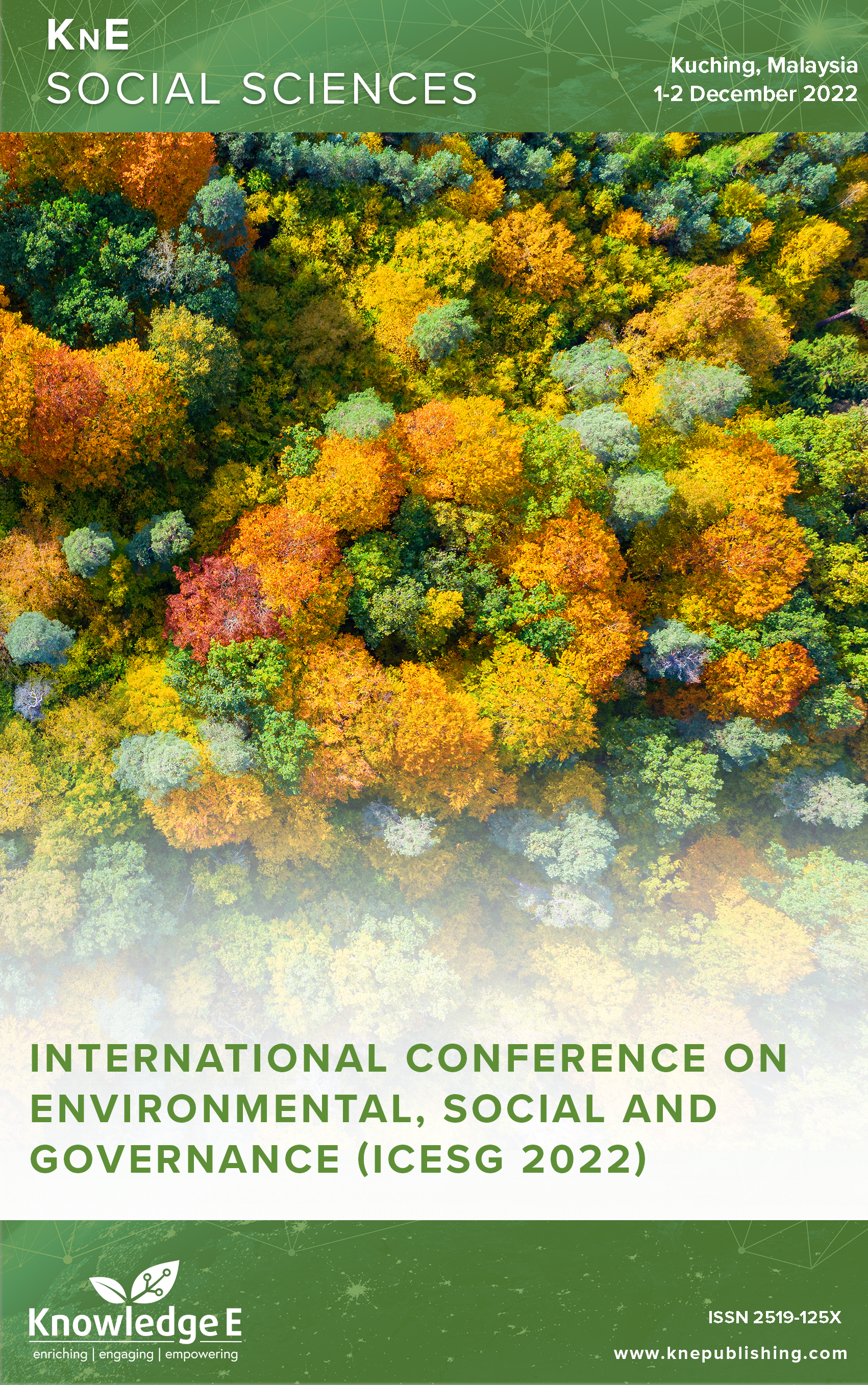A Bibliometric Analysis of Biodegradable Products in Circular Economy and Consumer Perception
DOI:
https://doi.org/10.18502/kss.v8i20.14630Abstract
The transition towards a global circular economy is widely acknowledged as one of the most promising solutions to counteract resource depletion and environmental deterioration. In alignment with this perspective, there has been a rise in the availability of environmentally friendly products in the consumer market. This shift towards sustainable production and consumption patterns has led to a surge in scholarly interest surrounding biodegradable studies, particularly from the consumer viewpoint, within the context of the circular economy. However, the exploration of this topic, especially concerning the consumer perspective and its role in the circular economy, remains limited in the existing literature search. With the ongoing progression towards a circular economy, there is an evident need for a deeper understanding, extracted from available literature. Utilizing a bibliometric analysis approach, this study aims to enhance comprehension of the present knowledge landscape and delineate potential future research directions linked to consumers’ roles in the transition from a linear to a circular economy, as well as their intent to adopt biodegradable products. Employing boolean operators and wildcard searches, a topic exploration was conducted within the Web of Science (WoS) core collection database on August 22, 2022. The study spanned from the first publication in the field in 2017 to the current date. A total of 51 documents were retrieved for comprehensive bibliometric analysis. To visualize research productivity and bibliometric insights, Tableau and VOSviewer were employed as presentation tools. The findings unveil the involvement of 223 authors hailing from 26 countries. The top three research areas encompass Environmental Sciences Ecology (35.3%), Science Technology Other Topics (33.3%), and Engineering (29.4%). Notably, the majority of significant contributors originated from the United States. Leading the pack of core publication journals is the Journal of Cleaner Production, cited 129 times in WoS. Co-authorship and country collaboration networks indicate a minimal level of partnerships. Through keywork co-occurrence network analysis, three prominent themes were identified: process, materials, and consumers. This analysis distinctly elucidates various developmental stages as well as nascent dimensions that constitute potential focal points for future research agendas in the field.
Keywords: bibliometric, biodegradable, circular economy, consumer, WoS
References
[2] Donthu N, Kumar S, Mukherjee D, Pandey N, Lim WM. How to conduct a bibliometric analysis: An overview and guidelines. J Bus Res. 2021;133:285–296.
[3] Dos Santos Gonçalves PV, Campos LM. A systemic review for measuring circular economy with multi-criteria methods. Environmental Science and Pollution Research. 2022 May;29(21):31597–31611.
[4] Ellen MacArthur Foundation. Towards the circular economy: Economic and business rationale for an accelerated transition; Ellen MacArthur Foundation: Cowes, UK. 2013. Retrieved-from https://ellenmacarthurfoundation.org/towards-a-circulareconomy- business-rationale-for-an-accelerated-transition
[5] European Commission. EU Bioeconomy Strategy. 2018. Retrieved from https://knowledge4policy.ec.europa.eu/publication/updated-bioeconomy-strategy- 2018_en
[6] European Commission. EU Circular Economy Action Plan : For a cleaner and more competitive Europe. 2020. Retrieved from https://ec.europa.eu/environment/circulareconomy/ pdf/new_circular_economy_action_plan.pdf
[7] European Commission. Communication from the commission. The European Green Deal. COM(2019) 640 final. Brussels. 2019. Retrieved from https://eur-lex.europa.eu/legalcontent/ EN/TXT/?qid=1576150542719&uri=COM%3A2019%3A640%3AFIN
[8] European Commission. Communication from the commission to the European Parliament, the Council, the European economic and social committee and the committee of the regions. A European Strategy for plastics in a circular economy. COM(2018) 28 final. Bussels. 2018. Retrieved from https://eur-lex.europa.eu/legalcontent/ EN/TXT/?uri=CELEX:52018DC0028
[9] Gupta P, Toksha B, Rahaman M. A Review on Biodegradable Packaging Films from Vegetative and Food Waste. Chem Rec. 2022 Jul;22(7):e202100326.
[10] Khare A, Jain R. Mapping the conceptual and intellectual structure of the consumer vulnerability field: A bibliometric analysis. J Bus Res. 2022;150:567–84.
[11] Marzi G, Dabic M, Daim T, Garces E. Product and process innovation in manufacturing firms: a 30-year bibliometric analysis. Scientometrics. 2017;113(2):673–704.
[12] Moshood TD, Nawanir G, Mahmud F, Mohamad F, Ahmad MH, Abdul Ghani A, et al. Green product innovation: A means towards achieving global sustainable product within biodegradable plastic industry. Journal of Cleaner Production. 2022;363:132506.
[13] Shogren R, Wood D, Orts W, Glenn G. Plant-based materials and transitioning to a circular economy. Sustain Prod Consum. 2019;19:194–215.
[14] Suchek N, Fernandes CI, Kraus S, Filser M, Sjögrén H. Innovation and the circular economy: A systematic literature review. Bus Strategy Environ. 2021;30(8):3686– 3702.
[15] Tseng ML, Islam MS, Karia N, Fauzi FA, Afrin S. A literature review on green supply chain management: trends and future challenges. Resources, Conservation and Recycling. 2019;141:145–162.
[16] Türkeli S, Kemp R, Huang B, Bleischwitz R, McDowall W. Circular economy scientific knowledge in the European Union and China: A bibliometric, network and survey analysis (2006–2016). Journal of Cleaner Production. 2018;197:1244–1261.
[17] van Eck NJ, Waltman L. Software survey: VOSviewer, a computer program for bibliometric mapping. Scientometrics. 2010 Aug;84(2):523–538.
[18] Wang S, Lydon KA, White EM, Grubbs JB 3rd, Lipp EK, Locklin J, et al. Biodegradation of poly(3-hydroxybutyrate-co-3-hydroxyhexanoate) plastic under anaerobic sludge and aerobic seawater conditions: gas evolution and microbial diversity. Environmental Science & Technology. 2018 May;52(10):5700–5709.
[19] Available from: https://www.tableau.com/products/desktop

